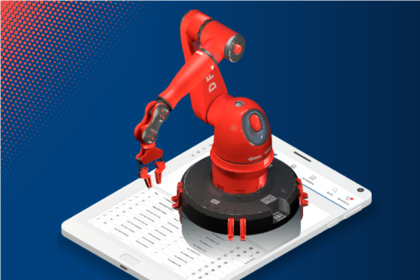Tactical Maintenance: Looking to the Future with Sensors
In our series "Smart Information: Data makes maintenance intelligent ", we look at each evolutionary stage of the maintenance pyramid, highlight the advantages and disadvantages of the individual maintenance strategies and show ways to implement them.
Condition Based Maintenance
In the third stage of the maintenance pyramid, Condition Based Maintenance (CBM), technical equipment is used for the first time: Sensors are installed in the machine that sound an alarm when a parameter leaves its usual range of values. In other words, the asset reacts during the defect, so to speak, or when a rule is violated - a bearing must not become hotter than X degrees, a pressure drop must not rise above a value Y. If this value is exceeded, maintenance is due.
For example, one could constantly check the precision of the timing belt control on an engine. If the timing belt begins to tear, the fabric layers inside the belt will probably tear first, making the belt longer and the timing less precise. A technical device could now stop the engine before the belt breaks. One accepts an unplanned defect but avoids the consequential costs of the damage.
Like operational maintenance, maintenance in the tactical area can also be improved through planning. In Condition Based Maintenance, one waits with an eye to the future until a threshold is exceeded - but one could also react in advance when the measured values through monitoring move towards the limit.
Advantages of Condition Based Maintenance
Here, too, the ability to plan has a positive effect on storage and logistics. If the condition of a machine changes and a defect is imminent, the required parts can be ordered in time, ideally directly via the digital spare parts catalog - without interface or media breaks. Service technicians, cranes and other special tools can be booked in advance - especially in conjunction with comprehensive documentation that includes, for example, the need for such equipment. Spare parts that are readily available can be ordered just in time to reduce capital lockup.
Predictive Maintenance
This is where Predictive Maintenance comes into play. Sensor data is continuously evaluated and interpolated into the future. This means that an incipient defect is detected, and an attempt is made to calculate when the component will finally fail. The maintenance date is then scheduled into this period at a favorable time. Data analytics technologies are used here to detect anomalies and assign them to a defect and a component. Based on the rate of change, a time-based prediction can then be made.
Create the foundations for Predictive Maintenance now!
With a digital spare parts and service information system, you create the baseis for implementing predictive maintenance. You develop a comprehensive, digital understanding of your machines and plants with the help of the central portal for all maintenance and service information. You build a "Digital Information Twin" - an intelligent data model of your machines, equipments and plants. By linking IoT data with inventories and spare parts, you optimize your processes, reduce costs, and optimally position your company for the future..
In the next blog post you can read more about the two top positions of the maintenance pyramid - Reliability Based Maintenance and Financially Optimized Maintenance.
Go back to the previous level of the maintenance pyramid here or find more information about Strategic Maintenance here.


